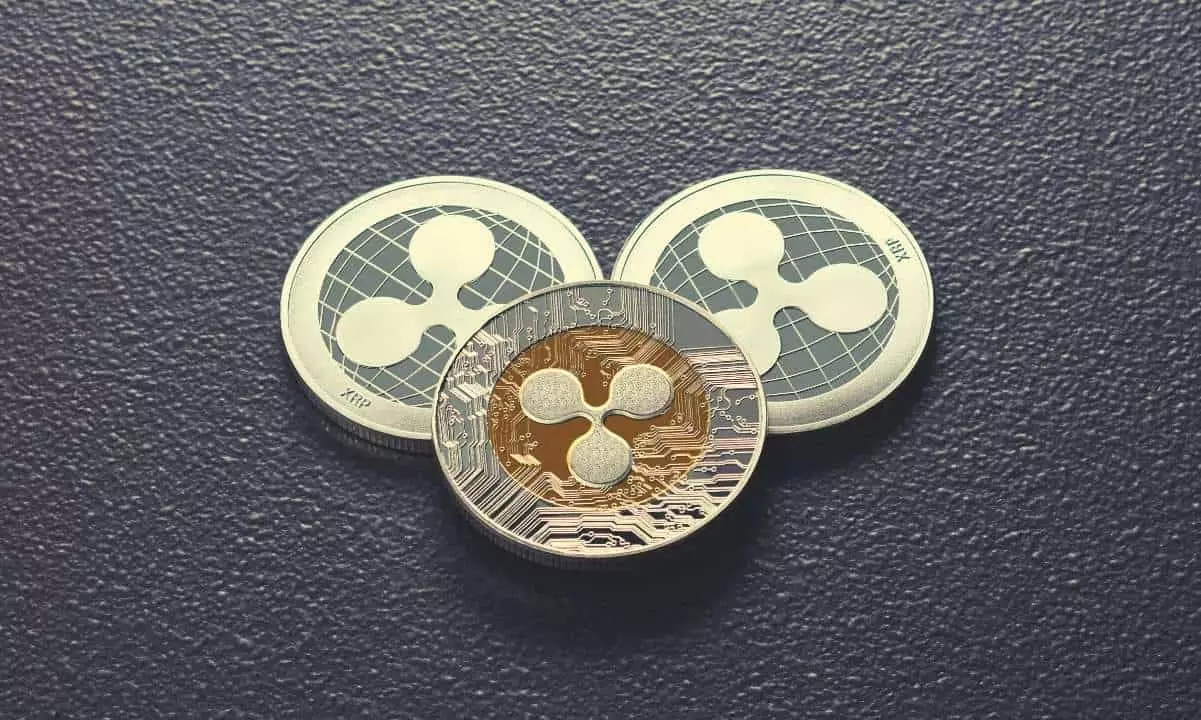The introduction of futures contracts for cryptocurrencies on regulated exchanges like the Chicago Mercantile Exchange (CME) often ignites waves of curiosity regarding the legitimacy and maturity of the crypto space. This milestone suggests a certain level of institutional acceptance that piques the interest of investors, both seasoned and new. However, if we peel back the layers, we notice that the initial excitement may not always align with market realities. The recent launch of XRP futures offers a valuable case study in this dichotomy, revealing more concerns than triumphs in the current cryptocurrency landscape.
The first and most glaring issue with the XRP futures launch is the underwhelming trading volume compared to the historical performances of Bitcoin (BTC) and Ethereum (ETH) futures offerings. On the first day of trading, XRP futures amassed a notional volume of over $19 million, with only 150 standard contracts representing the bulk of this figure. For context, Bitcoin futures’ debut in 2017 resulted in over $100 million in trading volume, an impressive number indicating robust interest. In such a tumultuous market, one can’t help but question whether XRP is losing its assertive stance within the crypto ecosystem.
Market Frustrations and Regulatory Challenges
One cannot ignore the significant elephant in the room: regulatory hurdles. XRP has always been a token mired in controversy due to an ongoing legal battle with the U.S. Securities and Exchange Commission (SEC). The recent rejection of a proposed $50 million settlement showcases the fragility of XRP’s position. While many observers believe regulatory clarity could propel XRP to new heights, the continuing uncertainty pulls the narrative in the opposite direction. It is a challenge that stifles investor confidence, resulting in the low launch volume observed.
Moreover, the competition from more established platforms adds another layer of complexity. XRP futures debuted in an already crowded market riddled with alternatives on platforms like Binance and Coinbase, diminishing the uniqueness and attraction of CME’s product. Unlike the earlier launches of BTC and ETH futures—where there were fewer derivatives to choose from—the current landscape is saturated with options, each vying for investors’ affection. This saturation effectively hampers XRP’s potential to carve out a niche for itself, a misstep that shouldn’t be overlooked.
Timing and Market Sentiment
Examining the broader market context sheds light on another glaring issue: timing. The cryptocurrency market is known for its volatile nature, reacting sharply to macroeconomic indicators. XRP’s futures launch occurred during a phase of market indecision, a stark contrast to the bull runs that accompanied Bitcoin’s and Ethereum’s futures. The atmosphere of skepticism surrounding XRP is palpable; it’s not just about a product but also about inherent trust in the token itself.
Investor sentiment can hardly be underestimated, especially in the world of cryptocurrencies where confidence feeds into speculative fervor. Current market conditions don’t appear as favorable for XRP as they were for its predecessors. Amid fears of a drawn-out regulatory crisis and the existing competition, it’s easy to see why initial interest fell flat. The crypto community has not forgotten how a strong market sentiment elevated Bitcoin and Ethereum to unprecedented levels, suggesting that XRP is woefully behind in shaking off the tarnish of regulatory scrutiny and public skepticism.
Contract Specifications and Liquidity Concerns
In contrast to its predecessors, XRP’s futures contracts may offer unappealing specifications to potential traders. Given the larger denominations that Bitcoin and Ether represent, the barriers to entry seem more daunting to casual or retail investors, while the allure of lower transaction costs and high liquidity offered by alternative platforms could steer investors away from CME’s XRP offerings. As a result, even traders inclined to express interest might recoil upon further investigation, leaving CME’s XRP futures products without the traction needed to flourish.
It must be acknowledged that the future can change, and many optimists remain in the market. However, one cannot ignore the impending hurdles that threaten to besiege this once-promising cryptocurrency. As we dissect the launch of XRP futures at the CME, it is increasingly difficult to adopt a narrative that is anything but critical. In an evolving landscape marked by fierce competition and stringent scrutiny, are we witnessing merely an echo of XRP’s potential— or the twilight of an overhyped asset?

